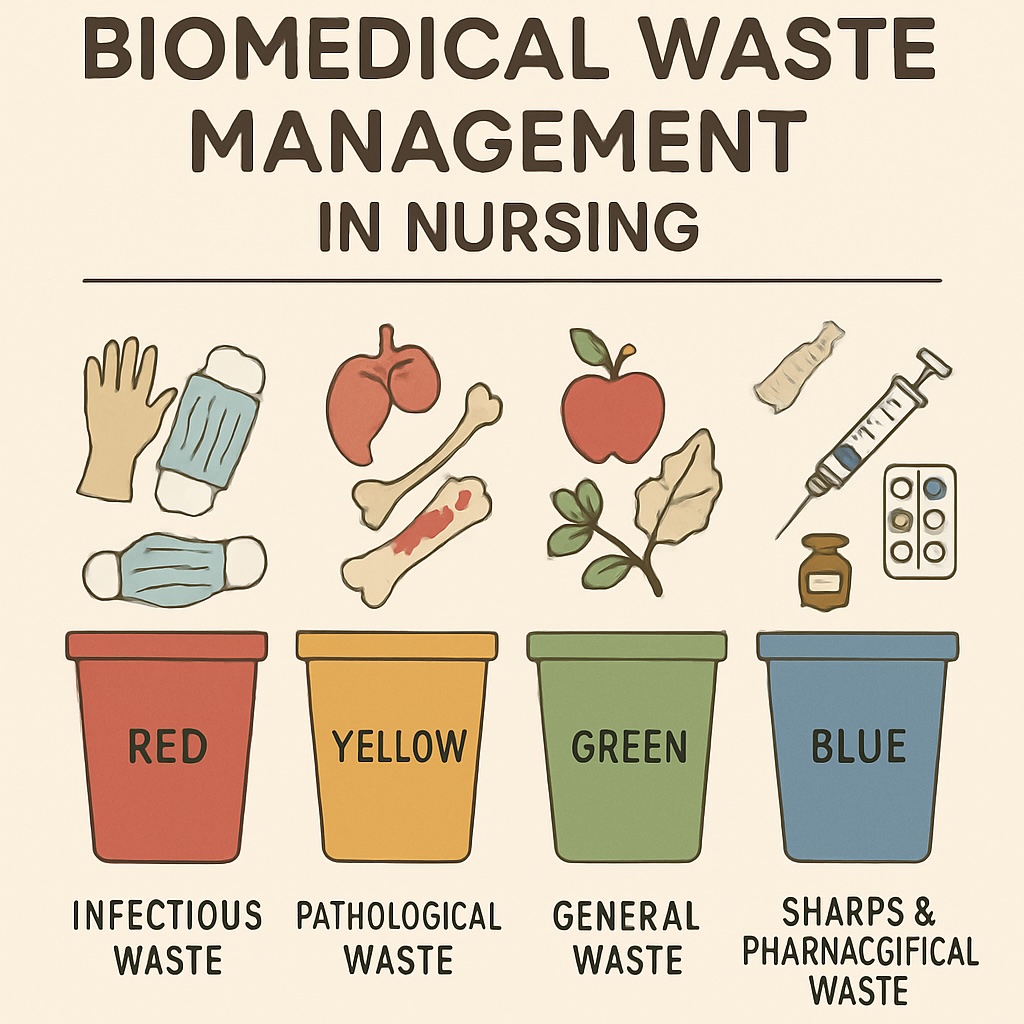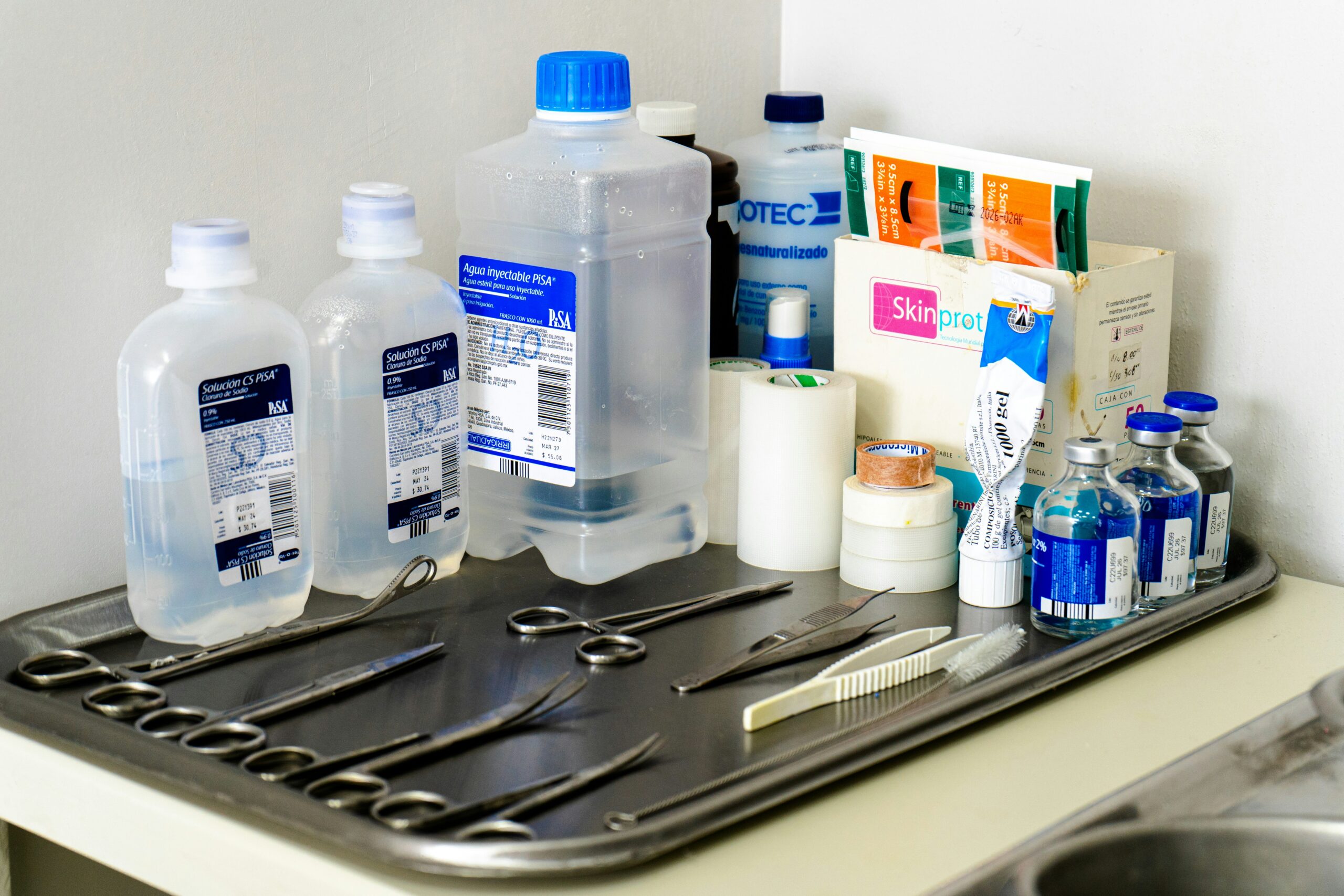Biomedical waste management in nursing is one of the most important responsibilities for healthcare staff.Every nurse plays a crucial role in ensuring the safe disposal of waste. This applies to nurses in small clinics, busy hospitals, and surgical units. This isn’t only about compliance; it’s about protecting people, preventing infections, and maintaining a safe environment.
If waste is mishandled, it can spread diseases like Hepatitis B, Hepatitis C, or HIV. It can also leak into water systems or landfills, causing long-term damage. But when waste is managed correctly, it becomes routine and worry-free. Nurses are at the center of that process.
Why Biomedical Waste Management Matters in Nursing
Nurses are usually the first people to deal with waste from patient care. This includes syringes after injections, blood-soaked dressings, and containers of body fluids. What happens in those moments sets the tone for the entire facility’s waste management system.
Safe disposal protects staff and patients from dangerous exposures. It also shields the community from environmental contamination. Regulatory bodies like OSHA and the EPA require strict compliance, but beyond laws and fines, it’s a moral responsibility. For nurses, biomedical waste management is not an optional extra — it’s part of providing safe care.
Understanding Biomedical Waste
Biomedical waste is any material produced during the diagnosis, treatment, or research involving humans and animals. The World Health Organization (WHO) defines it as healthcare waste that may pose a risk of infection or environmental harm.
Some of it is highly dangerous — like sharps or infectious materials — while other types are less harmful, such as uncontaminated packaging or office waste. Nurses need to know the difference so that waste can be handled and disposed of in the right way.
For example, infectious waste includes anything that comes into contact with blood or bodily fluids. Sharps waste includes used needles, syringes, and scalpels. Pathological waste includes body tissues or surgical specimens, which usually require incineration. Hazardous chemical waste comes from labs and cleaning processes, while expired drugs fall under pharmaceutical waste. Even general waste like empty boxes and paper must be separated, so it doesn’t mix with dangerous materials.
The Role of Nursing Staff in Biomedical Waste Management in Nursing
The nurse’s role in biomedical waste management is frontline and hands-on. When a procedure is done, the waste is right there — and nurses decide what happens to it next. If it goes into the wrong bin, the entire waste stream is compromised.
Nurses are responsible for identifying waste types, placing them into the correct containers, and making sure everything is labeled. They also need to use personal protective equipment (PPE) whenever handling waste, both for their own safety and for compliance with hospital protocols.
Perhaps most importantly, nurses also monitor the system. If a container is overfilled or mislabeled, they’re usually the first to notice. By reporting issues and participating in training, nursing staff keep the facility safe and compliant.
Biomedical Waste Segregation: Color-Coded Bins
One of the simplest yet most effective systems in biomedical waste management is the color-coded bin system. This system ensures that each type of waste goes into its own category, minimizing risks.
Yellow bags are used for anatomical waste like tissues or soiled materials, which usually end up in incineration. Red bags are for recyclable items that are contaminated but can be treated and reused, such as certain plastics. Sharps waste, including needles and scalpels, goes into puncture-proof blue or white containers. Finally, black bags are reserved for non-hazardous waste like general office garbage.
For nurses, the key is consistency. Every piece of waste, no matter how small, must be placed correctly. Even one needle thrown in the wrong bin creates risks for handlers down the line. By double-checking segregation, nurses form the backbone of an effective biomedical waste system.
Safe Handling and Storage
Handling and storing biomedical waste isn’t just about putting it in the right bin. Nurses must ensure that containers are sealed properly, labeled clearly, and not left where patients or visitors can access them.
Personal protective equipment plays a big role here. Gloves, masks, and gowns aren’t optional — they’re essential barriers that protect nurses from exposure to pathogens and chemicals. In many facilities, goggles or face shields are also required when handling large amounts of waste.
Storage is equally important. Biomedical waste should be kept in designated, ventilated rooms that only trained staff can access. Warning signs should be visible, and inspections should happen regularly to prevent accidents. For nurses, that means making sure waste is never left unattended in hallways, patient rooms, or treatment areas.
Disposal and Treatment Methods
After collection and storage, waste is transported for treatment and final disposal. Nurses don’t usually handle the treatment themselves, but they need to understand the processes to ensure waste is packaged and labeled correctly.
Incineration is the most common method for pathological and pharmaceutical waste. It destroys pathogens and reduces waste volume drastically. Autoclaving uses steam and pressure to sterilize infectious waste, making it safe for disposal. Chemical disinfection is used for liquid waste, while non-hazardous items can go to municipal landfills.
By partnering with licensed companies like MedCycle Waste Management, healthcare facilities can ensure every type of waste is handled with the proper treatment method. Nurses make sure the waste is prepared correctly before it leaves the facility.
Training and Education in Biomedical Waste Management in Nursing
Biomedical waste management is an area that evolves. New technologies, updated regulations, and improved methods are introduced regularly. That’s why training for nursing staff is not a one-time event — it’s ongoing.
Workshops, refresher courses, and visual reminders around the facility help nurses stay updated. Many hospitals now include biomedical waste management in onboarding for new nurses. Continuous education helps prevent mistakes, reduces injuries, and ensures compliance with CDC guidelines.
Training isn’t just about rules; it’s about building confidence. When nurses understand why certain protocols exist, they’re more likely to follow them diligently.
Monitoring, Auditing, and Record-Keeping
Healthcare facilities must keep strict records of:
-
Waste generated (type + volume).
-
Treatment methods used.
-
Dates of collection and disposal.
-
Training logs for staff.
Regular audits identify gaps and ensure continuous improvement. Nursing staff play a role in reporting and documenting accurately.
Challenges and Solutions
Nursing staff face real challenges in biomedical waste management. Sometimes, bins are overfilled. Sometimes, there’s a lack of training or resources. And in smaller clinics, budget constraints make it difficult to invest in advanced waste solutions.
The solution starts with consistent training and clear communication. Nurses must feel empowered to report when something isn’t right. Facilities should also invest in affordable waste management partnerships — like MedCycle’s no-contract services — to ensure compliance without financial strain.
By combining training, teamwork, and outside support, these challenges can be overcome.
FAQs About Biomedical Waste Management in Nursing
Q1. What is biomedical waste in nursing?
It’s waste generated during patient care, such as used dressings, syringes, and lab materials. Nurses are responsible for separating and handling it safely.
Q2. Why is biomedical waste management important for nurses?
Because nurses are on the frontline, their actions prevent infections, protect staff, and keep the environment safe.
Q3. What PPE should nurses wear when handling biomedical waste?
Gloves, masks, and gowns are the minimum. In high-risk cases, goggles or face shields add extra protection.
Q4. How do nurses manage sharps waste?
Sharps must go into puncture-proof containers. They should never be recapped or overfilled. Once sealed, the container is collected by licensed disposal providers.
Q5. What happens if biomedical waste is not segregated properly?
Improper segregation increases risks for staff, patients, and waste handlers. It can also result in regulatory fines and environmental contamination.
Conclusion: Nurses at the Core of Safety
Biomedical waste management in nursing is about more than bins and bags. It’s about responsibility, awareness, and patient safety. Every nurse who places a syringe in the correct sharps container or seals a waste bag properly is protecting not just themselves, but their patients and their community.
By following safe practices, staying updated with training, and partnering with reliable waste management companies like MedCycle, nurses ensure waste is handled with professionalism and care. And in healthcare, that makes all the difference.
Contact MedCycle Today
Let’s talk about how we can help your clinic stay compliant, efficient, and secure.
📍 Serving: Houston | Dallas | Katy | Plano | Sugar Land | The Woodlands | Frisco
📞 Call 281.789.0202
🌐 Visit https://medcycle.com/contact
💬 Request a Free Quote in Minutes
Protect your clinic, your staff, and your community—with MedCycle.
Follow us on
Instagram and
Facebook
to stay in the loop on all the latest deals!



